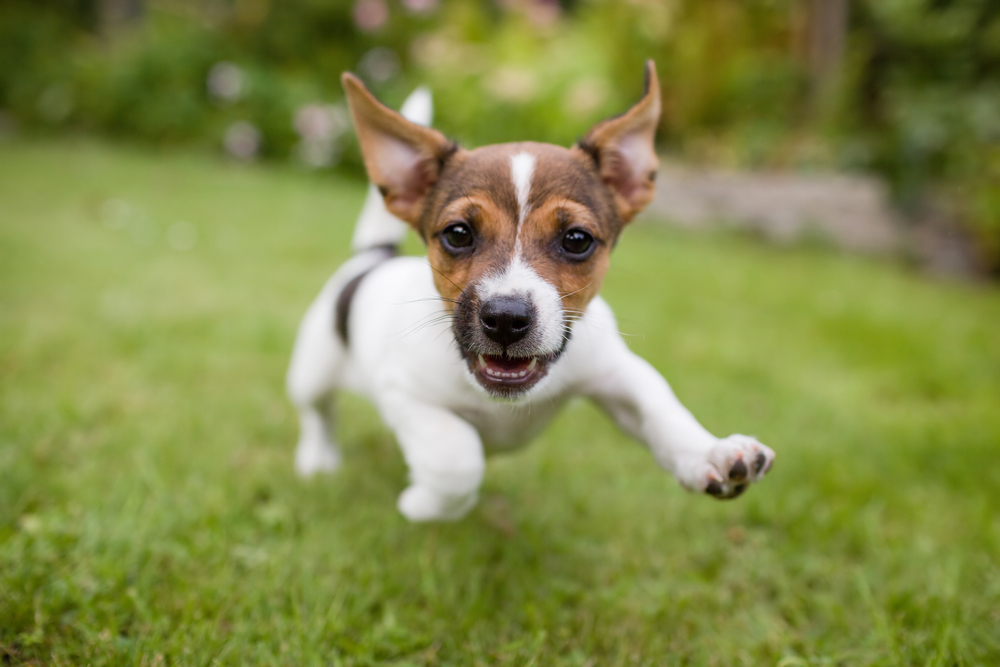Coming home with a brand new puppy is exciting, with anticipation for a life full of love, laughter, loyalty, and a little bit of hard work and sacrifice. But, one danger stands in the way of your pup spending the rest of her life with you: parvovirus. This easily contracted virus has no cure and is always fatal. However, recognizing the signs of the virus means you can get your puppy help early, and knowing how it’s transmitted will help her avoid infection. Here are five facts you should know to protect your pup from parvo:
- Parvovirus lives a long time in the environment — Parvovirus is a virus passed through fecal matter that, unfortunately, is resistant to heat, alcohol, detergents, and many anti-bacterial cleaning solutions. The virus has been recovered from room-temperature surfaces three months after contamination from fecal matter. If your home has been contaminated by an animal with the virus, use a 1:30 bleach solution on contaminated surfaces.
- Direct contact isn’t necessary for transmission — Because parvovirus can be transmitted via infected surfaces, dog-to-dog contact isn’t necessary for infection. The virus can be transmitted to your puppy when she walks on a previously contaminated surface, or from shoes, clothing, or toys brought into your home. The only way to avoid infecting a new puppy or unvaccinated dog is to keep them in an area where you know there has never been another dog’s feces, or an area that can be cleaned with bleach solution. If possible, keep your puppy indoors or in a private, fenced backyard, and avoid dog parks, public sidewalks, hiking trails, and yards shared with multiple dogs, such as an unfenced front lawn where strays can wander, until she is fully vaccinated.
- Parvovirus is detectable — Testing for parvovirus requires only a small fecal sample, and in 10 minutes we can determine whether your puppy has the virus. If you have any concerns about your pup, we likely will first suggest a parvo test, because puppies who have been vaccinated are still potentially at risk of infection. Adhering to vaccine schedules and completing the vaccination series is extremely important.
- Recognizing early signs of parvovirus is vital — Parvovirus signs are sometimes attributed to other illnesses, but if your puppy hasn’t finished her vaccinations, or your dog hasn’t been tested or vaccinated, parvovirus signs, including the following, should be treated as an emergency.
- Vomiting
- Diarrhea
- Lack of appetite
- Lethargy or listlessness
- Fever
The diarrhea associated with parvovirus often smells strong, and may contain a lot of mucus or blood. Many dogs will not show every clinical sign, but vomiting and diarrhea are the most common and consistent. If your un- or under-vaccinated dog or puppy has diarrhea, err on the side of caution and call us immediately.
- Parvovirus acts quickly — Parvovirus signs develop approximately six days after infection. Once symptoms appear, your pet may die within 48 hours, so veterinary care at the first sign of infection is critical. Parvovirus isn’t curable, but supportive treatment, such as around-the-clock care with intravenous fluids, antibiotics, and nutritional support until the patient’s immune system takes over, may defeat the virus.

Parvovirus in dogs was not recognized until 1978, and detection and treatment continues to improve. We do know that this deadly virus is easily transmitted and that unvaccinated dogs run a high risk of infection. Vaccines provide the best protection, but accidental infection can still occur. Ensure your new puppy or dog is tested for parvovirus, and that you strictly adhere to the recommended vaccine schedule. Call us to set up an appointment and protect your new furry friend against this devastating disease.







Leave A Comment